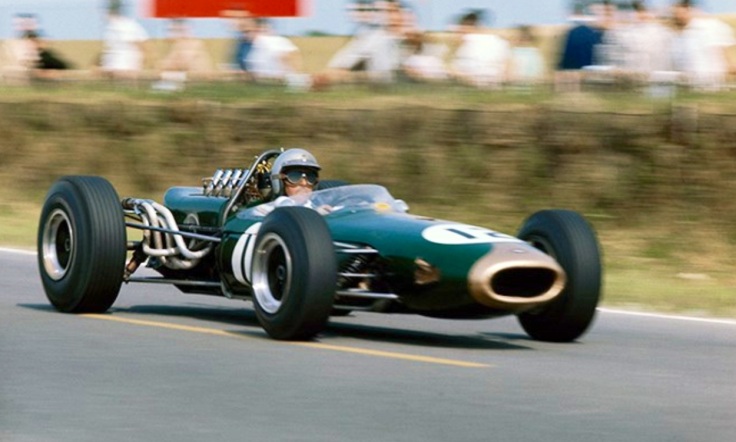Some time before the burbles of the Rover V8 could be heard on British shores, the all-aluminium Buick “Fireball” V8 was born in Detroit, Michigan. Let’s take a short look through history of how that came to be.
Buick Era
In the 1950’s the car industry in the US turned to aluminium as a material means for engine production in a quest for increased efficiency as well as decreasing weight. One of the manufacturers to embrace aluminium with both arms was General Motors (GM) which developed a compact V8 for their Buick range of cars. The engine displaced 3528 cc and, because of its compact size and low weight, proved very easy to package.
Development work on the engine started in 1958. It was the first mass-produced, all-aluminium, American-made engine, according to Buick: A Complete History by Larry Gustin and Terry Dunham. Cliff Studaker, 81, a retired Buick Senior Project Engineer who oversaw development of the Fireball V8, was known to have said that GM had no idea that the engine would be so versatile, flexible and tunable. The initial job had been to design a lightweight engine for Buick, Oldsmobile and Pontiac compacts.
With a two-barrel carburetor the engine made 155 bhp, and with a four-barrel it was rated at 185 bhp. Engineers at Oldsmobile tweaked their version, adding special heads and an optional turbocharger, creating the Olds 215 ”Rockette” engine that cranked out 215 bhp.
After building about 750,000 of the engines, GM decided to drop it at the end of the 1963 model year. Studaker says that, although the engine got great reviews for power and smoothness, cost was an issue. So GM abandoned it in favour of Buick’s first V6, also dubbed “Fireball”. The Fireball V6 was based on the aluminium V8 but was instead made of cast iron.
List of GM’s Y-body vehicles which used the Buick 215:
- 1961 Buick Skylark – 185 bhp
- 1961 Buick Special – 155 bhp
- 1961 Oldsmobile Cutlass – 185 bhp
- 1961 Oldsmobile F-85 – 155 bhp
- 1961 Pontiac LeMans – 185 bhp
- 1961 Pontiac Tempest – 155 bhp
- 1962 Oldsmobile Jetfire Turbo – 215 bhp
1966 Brabham BT19 – Repco 620 V8 – 300 bhp

The Brabham BT19 is a Formula One racing car designed by Ron Tauranac for the British Brabham team. The BT19 competed in the 1966 and 1967 Formula One World Championships and was used by Australian driver Jack Brabham to win his third World Championship in 1966. The BT19, which Brabham referred to as his “Old Nail”, was the first car bearing its driver’s name to win a World Championship race.
Repco racing engines were designed by the leading motorcycle engine designer, Phil Irving, and built by a small team at a Repco subsidiary, Repco-Brabham engines Pty Ltd, in Maidstone, Australia. It uses American engine blocks obtained from Oldsmobile’s aluminium alloy 215 engine. Repco fitted their own cast iron cylinder liners into the Oldsmobile blocks, giving a displacement of 2,994 cc. The cylinders were also stiffened with two Repco magnesium alloy castings and featured Repco-designed cylinder heads with chain-driven single overhead camshafts. The internals of the unit consist of a bespoke Laystall crankshaft, Daimler or Chevrolet connecting rods, and specially cast pistons. The cylinder head design means that the engine’s exhaust pipes exit on the outer side of the block, and therefore pass through the spaceframe before tucking inside the rear suspension; a layout which complicated Tauranac’s design work considerably. The engine is water-cooled, with oil and water radiators mounted in the nose.
The 620 engine was light for its time, weighing around 154 kg (340 lb), compared to 227 kg (500 lb) for the Maserati V12. In 3 litre Formula One form, the 620 V8 only produced around 300 bhp at under 8,000 rpm, compared to the 330–360 bhp produced by the Ferrari and Maserati V12s. That being said however, it produced high levels of torque over a wider range of engine speeds – from 3,500 rpm up to peak torque of 316 Nm at 6,500 rpm. Installed in the lightweight BT19 chassis, it was also relatively fuel efficient; on the car’s debut Brabham reported that the BT19 achieved 7 miles per gallon, against figures of around 4 mpg for its “more exotic rivals”. This meant that it could start a Grand Prix with only 35 gallons of fuel on board, compared to around 55 gallons for the Cooper T81-Maseratis. The engine had one further advantage over bespoke racing engines: parts were cheap. For example, the engine blocks were available for only £11 each and the connecting rods cost just £7 each.

